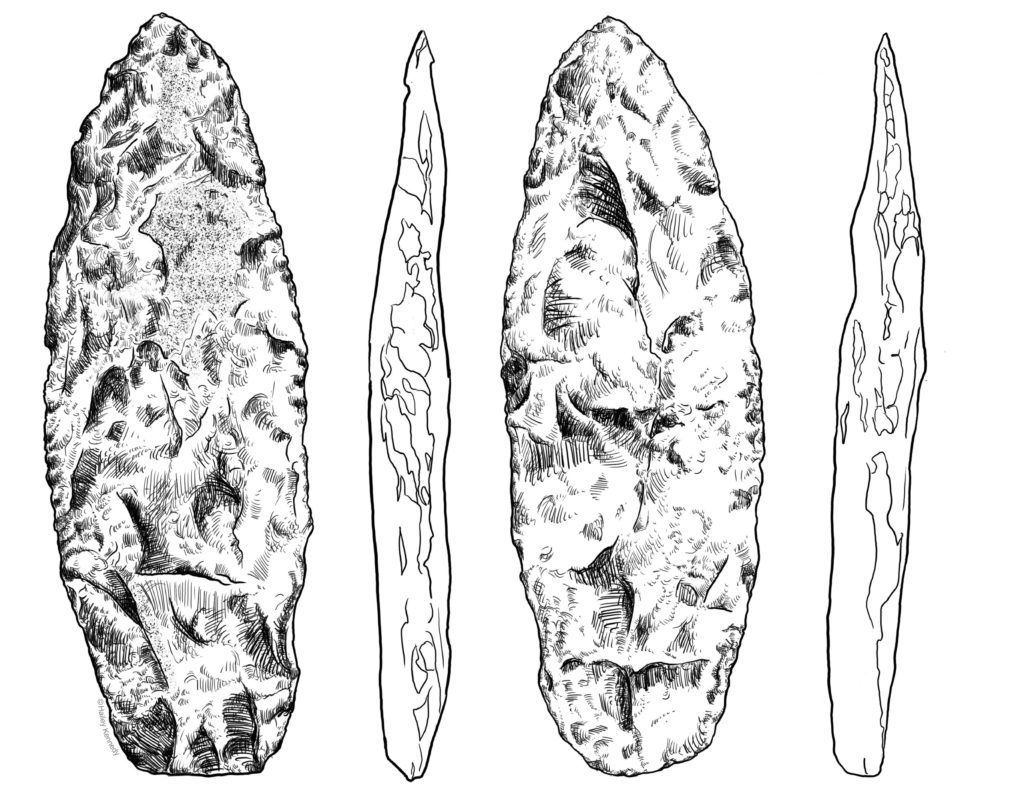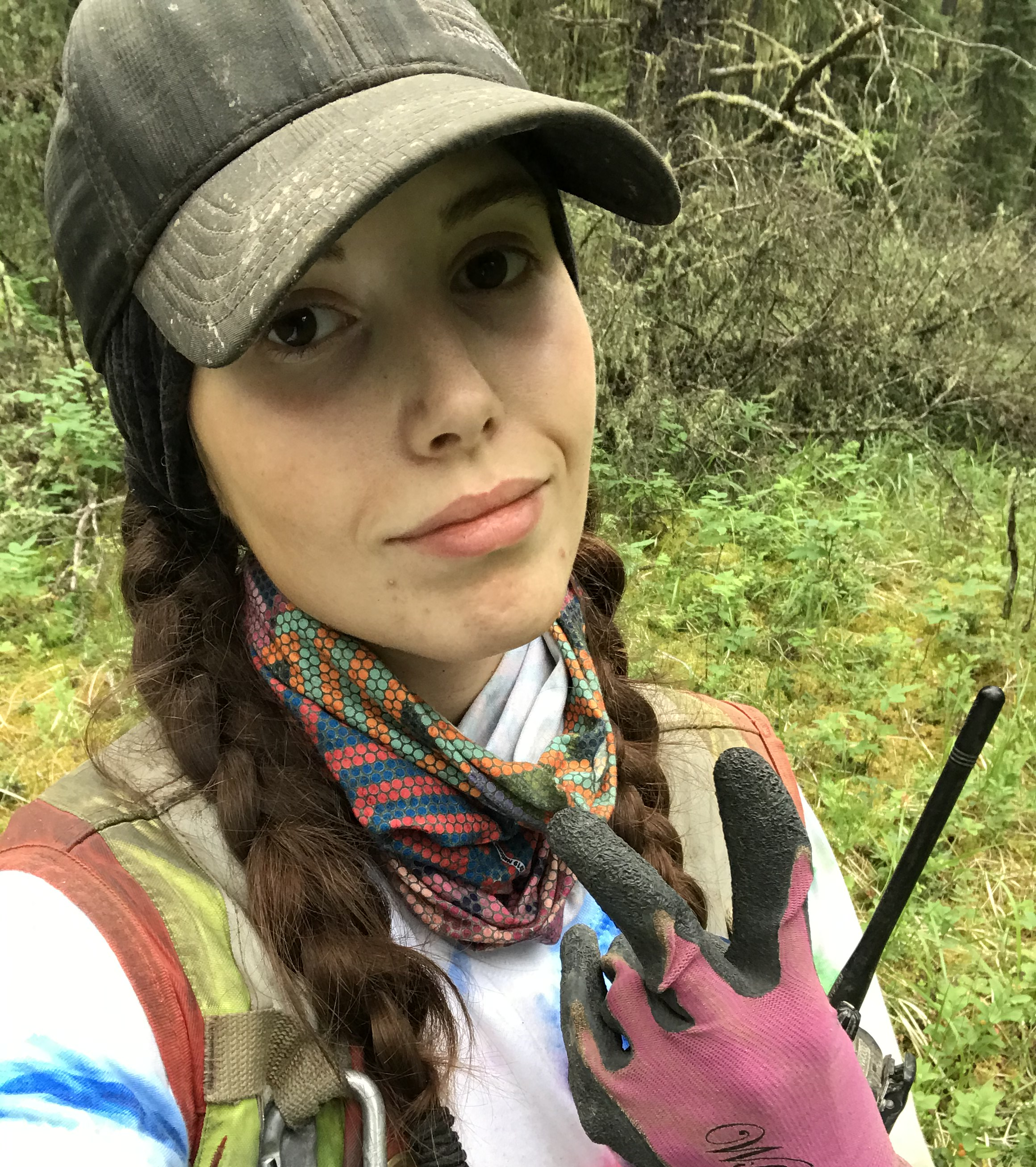Post Category : Glossary Local Archaeology Special Finds
Lanceolate Bifaces of The Interior Plateau, BC
Spear Points in the Forest
In the summer of 2022, archaeologists Braedy Chapman and Fallon Hardie conducted archaeological impact assessments (AIA’s) on emergency wildfire rehabilitation developments. These developments were constructed to manage the spread and impact of wildfire throughout the Interior Plateau of British Columbia. Long stretches of forest have been scraped or bladed to prevent the spread of fires. This exposes the underlying sediment that archaeological artifacts and paleontological materials are typically situated in. Located within the general vicinity of the Chasm Canyon and 70 Mile House lies EhRi-15, a precontact archaeological site consisting of lithic debitage and tools, and the faunal remains of a currently unidentified mammal. Two lanceolate bifaces manufactured from a fine grained volcanic material, later determined to be dacite, were collected from the site. The material was likely sourced from the Arrowstone Hills located ~ 100 km south. This was determined after a Portable X-ray Fluorescence (pXRF) analysis was conducted.

Lanceolate Bifaces
Lanceolate bifaces are typically characterized by the widest point of the artifact as being between the middle and the tip. A lanceolate shape also has straight and parallel edges that taper to a point on the distal end. They also have a defining biconvex cross-sectional shape. Flake removal scar orientation and base elements of the artifacts, including shape, notching, and hafting characteristics vary depending on the manufacturing culture and use design. Several phases and traditions defined by projectile points with a lanceolate form have been recorded throughout the Interior Plateau over time. Such as the Old Cordilleran tool tradition (~ 10,500 to 5,500 B.P). The Old Cordilleran tool tradition refers to anthropogenic activity from the late Pleistocene to early Holocene period. The tradition is well documented throughout the interior of British Columbia, with many collections dominated by lanceolate form tools. Additionally, the Lochnore Phase (~ 5,000 to 3,500 B.P) and the Shuswap Horizon (~ 3,500 to 2,400 B.P) both display artifact tools with a lanceolate form in their diverse assemblages. This suggests long term cultural affiliations with earlier technological traditions! As such, it becomes incredibly difficult to associate a chronological date with the EhRi-15 bifaces based on typological attributes alone.

Conclusion
Nonetheless, the widespread record of lanceolate styles throughout time is significant for the construction and revision of a culture-historical model throughout the interior plateau of British Columbia. The continuation of any tool tradition, especially one that spans thousands of years in an ever changing landscape, is something to be marveled!

FALLON hARDIE
Archaeologist – Team Lead
Fallon is an Archaeologist and Team Lead for Ember Archaeology. She joined the team during her undergrad in September of 2020. At Ember, Fallon supports the successful completion of projects by leading and directing field crews. Her diverse experience throughout the Interior Plateau and Sub-Arctic regions of British Columbia, as well as the Boreal and Foothills regions of Alberta, has attributed to her keen ability to navigate the wilderness while completing historic resource impact assessments and mitigations. During the off-season, Fallon is responsible for assisting Permit and Project Archaeologists with artifact cataloguing, photography, data cleanup, and report writing.



